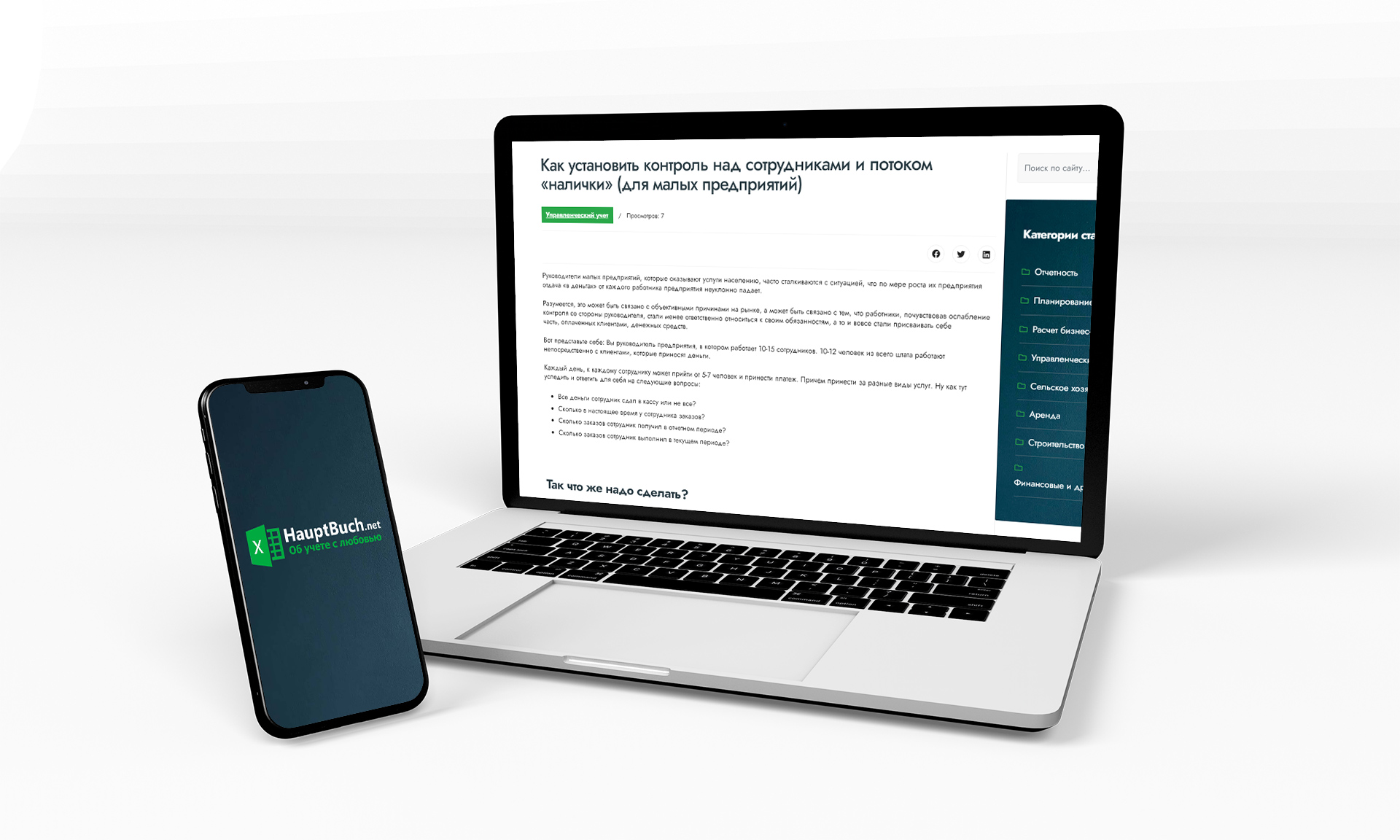Management accounting presented inunderstandablehumanaccessiblelanguage.
Management accounting presented inhumanaccessiblelanguage.

Heads of small enterprises providing services often face the situation when their enterprise is growing, but money returns from employees are falling down.
It may be caused by the objective reasons on the market, but it may be the result of weakening (as employees believe) the executive’s control. In this case the employees start fulfilling their duties less carefully or even usurp the money received from customers.
Just imagine the situation when you are a head of the company which hired 10-15 employees. 10-12 people work directly with the customers who bring in money. Day by day each employee meets about 5-7 people who execute the payments for different types of services. So, it is impossible to notice everything and be able to answer the following questions:
Firstly, you should delegate the responsibilities. The employee working with clients is not to be authorized to receive the payments from them! This is a very important rule. Money can be accepted only by a cashier! Each room, where your employees work with clients, is to be equipped with cameras or, at least, their imitations. It does not matter if there are no recordings or you do not have time to watch them. What is important here is the feeling of being supervised on regular basis.
Secondly, the payment can be executed only in accordance with the price-list approved by the head. In other words, the cashier (or it can be the accountant at a small enterprise) has a list of services your company can provide and their price. So, the client makes an advance payment according to the cost of the service he orders.
Thirdly, when the accountant (cashier) receives the advance payment, he produces a credit cash order, hands it to the client and then fills a special list with the following information:
This information may be posted before the money is received. But I suggest entering the information after you have received the advance payment as this step can be considered as a firm intention to place an order. This system is to work in the way when it is impossible to postdate the information or make any changes after it is posted.
Thus, the company will have a system with the information about the orders and customers, which will be structured to construct the reports easily. By the way, you should develop the report structure before launching a registry. On the basis of the reports constructed it is much easier for a programmer to develop the registry as he knows the type of information required.
You should understand that the above stated registry is to function in terms of the managerial accounting system described in the other article and with the help of accounting software. I have repeated it for several times but I would like to mention that the most efficient on the territory of CIS countries is 1C software.
How can you benefit from using this system?
Firstly, the chances to abuse the authorities are reduced dramatically. I would even say they are completely eliminated, but our people are quick-witted, they can find the ways how to outdo the system. Anyway, this system simplifies the control of employees.
Basic control takes place when it is possible to check the cost of the work done by the executor in accordance with the price-list and the sum as received in the cash office.
Besides, it is necessary to carry out the unannounced inspections from time to time, to check the orders the executor is busy with (each work can be traced by the documents, drafts, patterns etc.). The actual number of orders is to correspond to the registered ones (the information about reports was given above).
Secondly, the head of the company can realize what his workers do, what output they produce. Considering this information you can decide whether he needs this worker or not and take necessary measures.
For example, the employee has processed the orders totaling 10 000 UAH, but his salary is 9000 UAH (or even 10 000 UAH). Using the system the head of the company will be provided with the necessary information, he may question the importance of this “prominent” worker.
What is needed to maintain the smooth system operation?
Three elements:
It is possible to maintain the order at an enterprise only with the help of well-defined accounting and efficient control systems. But there are the companies where the executors work with the clients (minor customers) directly, and without such a system one will inevitably face the situations when the workers try to evade the responsibilities.
All stated above can be reached if: